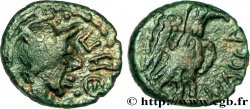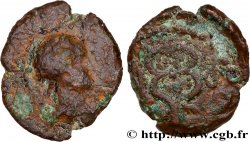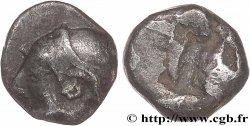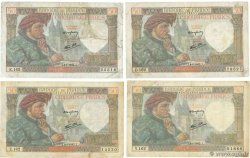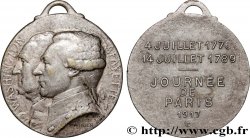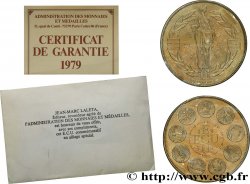220.00 €(Approx. 259.60$ | 189.20£)
Quantity
Add to your cart

Type : Obole MA, tête à droite - avers aux longues mèches
Date: c. 350-220 AC.
Mint name / Town : Marseille (13)
Metal : silver
Diameter : 10 mm
Orientation dies : 3 h.
Weight : 0,7 g.
Rarity : R2
Coments on the condition:
Monnaie sur un flan assez large mais très légèrement décentrée des deux côtés. Patine grise, irisée au droit
Catalogue references :
Obverse
Obverse legend : ANÉPIGRAPHE.
Obverse description : Tête juvénile d’Apollon à droite avec un début de favoris, grènetis.
Reverse
Reverse legend : M-A DANS LES 3E ET 4E CANTONS.
Reverse description : Roue à quatre rayons avec moyeu central.
Commentary
Ces oboles de poids lourd, avec la tête à droite de très bon style sont classées dans le CMP. dans la période classique, et plus précisément entre 380 et 336.
Assez homogènes dans l’ensemble, ces monnaies peuvent être classées plus précisément selon la composition de la chevelure, la présence et la taille des favoris, la taille du moyeu central au revers, etc... ; avec une grande part de subjectivité !
Avers d’un style particulier avec une petite tête et de longues mèches.
Assez homogènes dans l’ensemble, ces monnaies peuvent être classées plus précisément selon la composition de la chevelure, la présence et la taille des favoris, la taille du moyeu central au revers, etc... ; avec une grande part de subjectivité !
Avers d’un style particulier avec une petite tête et de longues mèches.







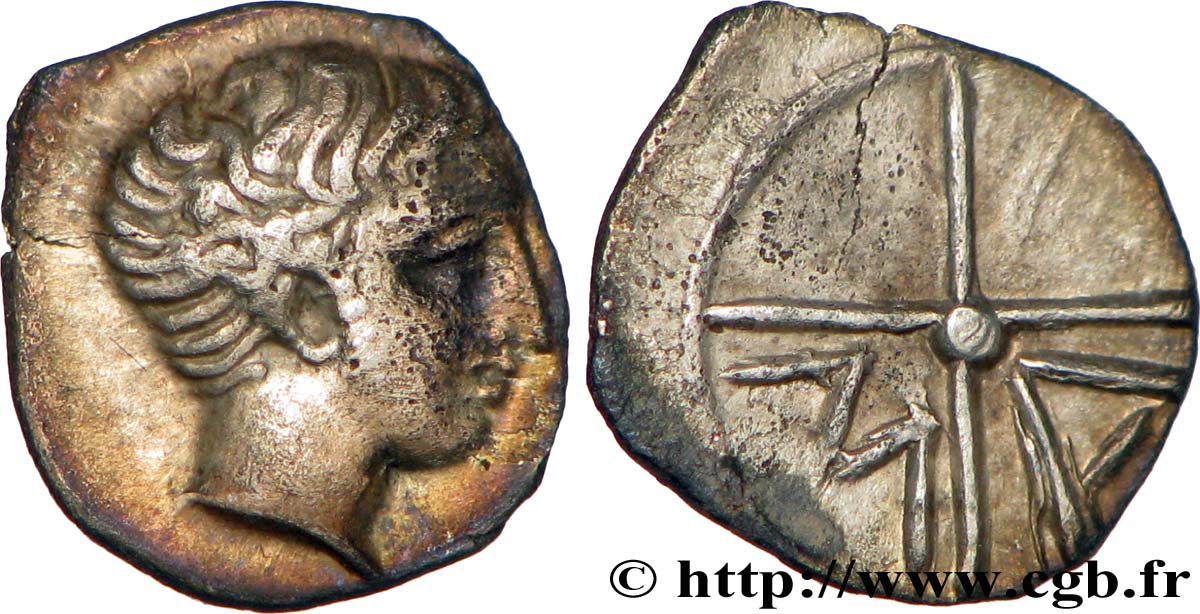
 Report a mistake
Report a mistake Print the page
Print the page Share my selection
Share my selection Ask a question
Ask a question Consign / sell
Consign / sell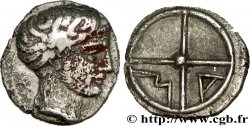
 Full data
Full data